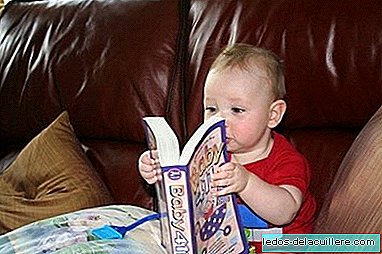
Many children have difficulty learning literacy. And although in many cases the problems are solved over time because children have their own rhythm, here we point out some factors that could affect them when learning to read and write.
Recall that there are language delays and specific disorders, both one and the other could condition certain problems in literacy. Let's see what it may be because the child has difficulties.
If the child has problems with concentration and attention. There are some tricks to improve the attention of children, help them focus. In the case of children with attention deficit hyperactivity disorder there are also delays in the acquisition of literacy.
As a consequence of have started talking late or with various articulatory errors (dyslalias), if they pronounce badly and confuse sounds, they make exchanges or substitutions of phonemes, distortions, shortening of words ... Many of these characteristics are normal when children begin to speak, although they are later "perfected". If they fail to be solved it is when it can lead to a disorder in the learning of reading and writing.
Dyslexia is a neuronal disorder in reading and writing that hinders the ability to learn to read and write in varying degrees.
Babies with hearing impairments develop delays in language acquisition and communication skills.
If the child has not had a favorable evolution of lateralization, that is, the recognition of his right and left.
Unfavorable social environments, non-exposure to stimuli, can lead to certain literacy difficulties.
They could also cause difficulties, although it seems paradoxical, the so-called dispedagogy, forced and / or early learning of literacy, problems with the pedagogical methods used or motivation, and ultimately inadequate teaching and learning processes.
Does my child have difficulty learning to read and write?
Here we leave some clues that could be indicative that the child has literacy problems. The sooner we detect the problem, the better, because when a child reaches pre-adolescence without having been diagnosed or helped in their problems, it will be much harder to help him get into a standardized writing and reading.
Some of these clues are normal at the beginning of learning and may even be later (pointing the finger when writing), the problem is then if they are combined with other factors. When in doubt, it is best to consult the teacher so he can guide us and evaluate the child.
There are many techniques that allow children to improve their abilities (depending on the cause of the disorder), so you don't have to let suspicions pass. We will have to be attentive if at the beginning of learning:
- It does not recognize the letters.
- Write with unequal letters, large and small.
- Point your finger when writing.
- Words are wavy, rise and fall without following a straight line.
- It does not separate words correctly.
- Write with "mirror effect", confusing p-q, d-b ...
- It confuses letters that resemble (n-u) ...
- Has trouble pronouncing certain similar sounds (p-b, d-t…)
As for older children who are already learning to read, if their reading is slow or does not understand what they read there may be a fundamental problem that has not been detected before. It is important not to let time pass, when there may be a conflict over the refusal to read and write, as the child is aware of their difficulties.
To all the above factors that may predispose children to present difficulties in learning to read and write the hereditary predisposition must be added (if there is a family history with literacy problems).












